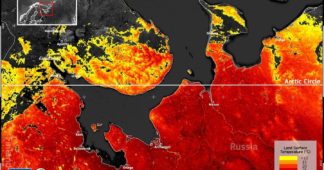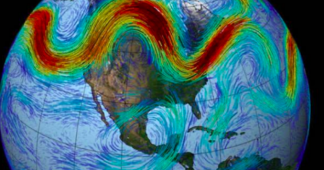by Nina LARSON
May 3, 2023
The United Nations warned Wednesday of a growing likelihood the weather phenomenon El Nino will develop in coming months, fuelling higher global temperatures and possibly new heat records.
The UN’s World Meteorological Organization said it now estimated there was a 60-percent chance that El Nino would develop by the end of July, and an 80-percent chance it would do so by the end of September.
“This will change the weather and climate patterns worldwide,” Wilfran Moufouma Okia, head of WMO’s regional climate prediction services division, told reporters in Geneva.
El Nino, which is a naturally occurring climate pattern typically associated with increased heat worldwide, as well as drought in some parts of the world and heavy rains elsewhere, last occurred in 2018-19.
Since 2020 though, the world has been hit with an exceptionally long La Nina—El Nino’s cooling opposite—which ended earlier this year, ceding way to the current neutral conditions.
And yet, the UN has said the last eight years were the warmest ever recorded, despite La Nina’s cooling effect stretching over nearly half that period.
Without that weather phenomenon, the warming situation could have been even worse.
Global heating spikes likely
La Nina “acted as a temporary brake on global temperature increase”, WMO chief Petteri Taalas said in a statement.
Now, he said, “the world should prepare for the development of El Nino.”
The expected arrival of the warming climate pattern, he said, “will most likely lead to a new spike in global heating and increase the chance of breaking temperature records”.
At this stage, there is no indication of the strength or duration of the looming El Nino.
The last one was considered very weak, but the one before that, between 2014 and 2016, was considered among the strongest ever, with dire consequences.
WMO pointed out that 2016 was “the warmest year on record because of the ‘double whammy’ of a very powerful El Nino event and human-induced warming from greenhouse gases”.
Since the El Nino effect on global temperatures usually plays out the year after it emerges, the impact will likely be most apparent in 2024, it said.
“We are expecting in the coming two years to have a serious increase in the global temperatures,” Okia said.
‘More extreme weather’
Taalas highlighted that the expected arrival of El Nino could have some positive effects, pointing out that it “might bring respite from the drought in the Horn of Africa and other La Nina-related impacts”.
But it “could also trigger more extreme weather and climate events” he said, stressing the need for effective early warning systems “to keep people safe”.
No two El Nino events are the same and their effects depend, in part, on the time of year, WMO said, adding that it and national meteorological services would be closely monitoring developments.
The climate pattern occurs on average every two to seven years, and usually lasts nine to 12 months.
It is typically associated with warming ocean surface temperatures in the central and eastern tropical Pacific Ocean.
Increased rainfall is usually seen in parts of southern South America, the southern United States, the Horn of Africa and central Asia, while severe droughts can occur over Australia, Indonesia and parts of southern Asia.
During summer in the northern hemisphere, El Nino’s warm water can also fuel hurricanes in the central and eastern Pacific Ocean, while hindering hurricane formations in the Atlantic Basin, WMO said.
Also read
Two trillion tonnes of greenhouse gases, 25 billion nukes of heat: are we pushing Earth out of the Goldilocks zone?
We remind our readers that publication of articles on our site does not mean that we agree with what is written. Our policy is to publish anything which we consider of interest, so as to assist our readers in forming their opinions. Sometimes we even publish articles with which we totally disagree, since we believe it is important for our readers to be informed on as wide a spectrum of views as possible.











